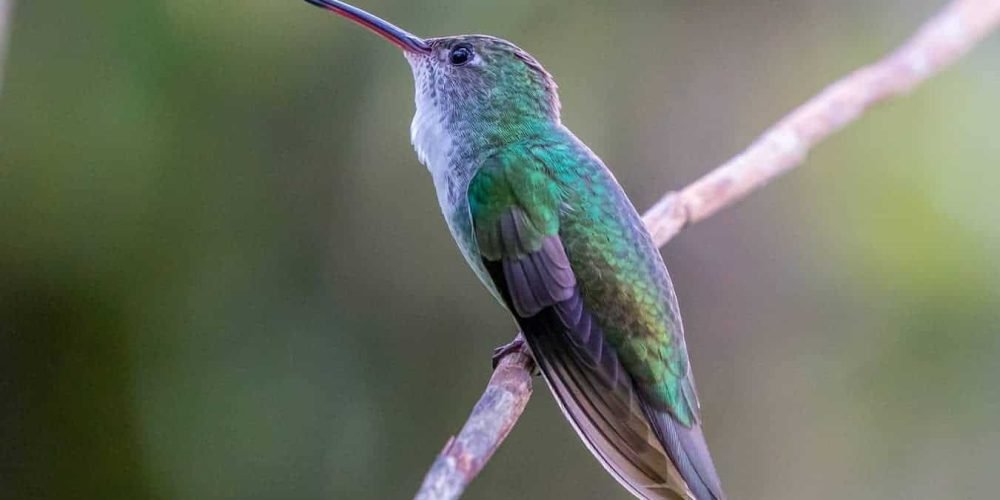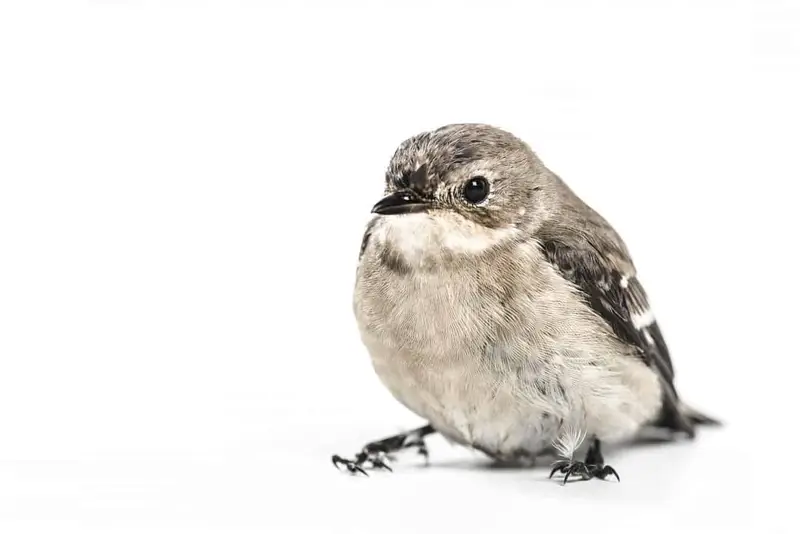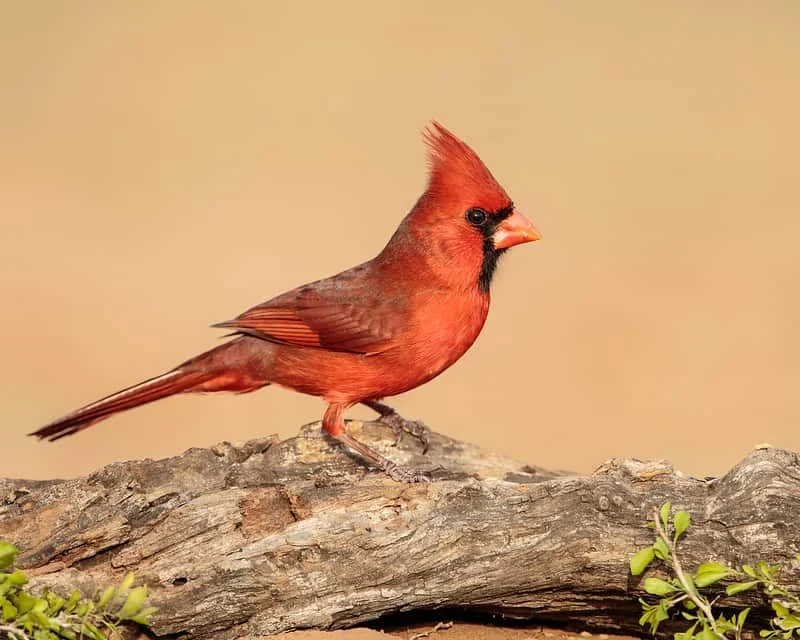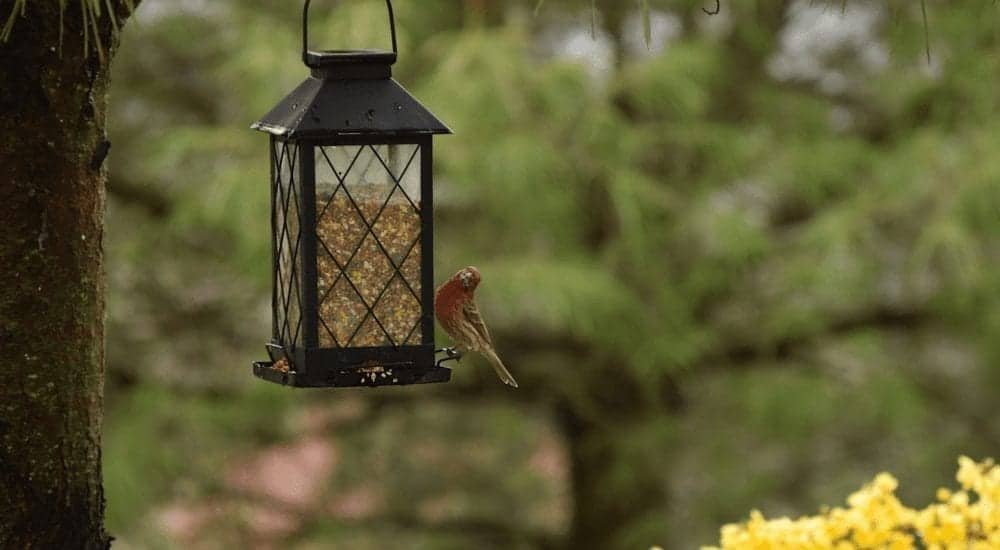
Have you ever watched a hummingbird and envied it for its energy? A simple glance at any hummingbird will quickly reveal a flurry of energy exertion. These little birds, which are known for flapping their wings so hard that it is almost impossible to see them, are more active than most of the animal kingdom. In fact, they are known for their ridiculous heartrates and breakneck speeds that allow them to fly all over in what seems like no time at all.
When you see just how much these little birds do, it is easy to find yourself wondering what they do to wind down. Are they spending time sneaking in naps? It would certainly be justifiable if they did. If not, what does their sleep schedule look like? Hummingbirds have so much to recover from, so it would stand to reason that they must rest eventually. With a creature this active, it comes as no surprise that they take sleep quite seriously. In this article, we will breakdown what a hummingbird’s recovery time looks like after a long day.
Table of Contents
How Do Hummingbirds Sleep?
Hummingbirds are little marvels of nature and to accommodate that, they have taken on some unique habits. The hummingbird is known for its incredibly high output, incredibly high body temperature, and incredibly high metabolism.
These aspects of the hummingbird come together to make the perfect machine, but it does come at a cost. After a long day of constant activity, hummingbirds have to power down to rest. Unlike other animals that will enjoy peaceful moments in their day, the hummingbird really never stops moving while it is awake. As you might expect, it takes a little something extra for a bird this active to get enough rest to do it all again the next day.
Though most animals sleep at night, the hummingbird is known for its unique method of sleeping called torpor. Torpor is a sort of miniature hibernation that hummingbirds enter and they do it every single night. You might think that this small hibernation state is simply the balancing act to living such an active lifestyle, but there is actually a lot more to it. Torpor is not merely a deep rest. It is a state that hummingbirds must enter for the sake of their survival. Without torpor, hummingbirds wouldn’t last the night.
The torpor process is necessary for a few key reasons. The first reason is the fact that hummingbirds have to combat their incredibly high metabolisms. Since they process food so quickly, they need constant nourishment to sustain it. When they enter torpor, their metabolic state drops to a much lower speed so that they can sleep through the night without needing to eat.
The second reason that torpor is so important is the fact that hummingbirds must maintain their body temperature. Their incredibly high body temperature is completely dependent upon their movement. When they stop moving, their body temperature naturally drops, particularly when the air gets colder at night. When a hummingbird enters torpor, it is a way for them to keep their body temperature locked at a lower temperature so that they are able to survive in colder temperatures.
Since their feathers do not insulate well and they can’t generate heat without needing food, this state can help them to remain alive against all odds. When they enter this state, hummingbirds will also spread out their feathers in an attempt to lock in what little body heat that they can.
When Do Hummingbirds Sleep?
Hummingbirds are often seen zipping around at all hours of the day, so a lot of people are wondering when these little guys actually sleep. Most people have never seen a hummingbird when it is asleep. These elusive creatures are known for spending time flitting about with their daring airborne dynamics, and it is often rumored that they don’t sleep at all.
The hummingbird, much like other birds, generally uses nighttime to sleep. This is because they use sunlight when it comes to chasing down delicious nectar, which is what they are known to eat. Though some hummingbirds have been known to stay active in well-lit and warm areas after dark, the majority of them slip off to enjoy a good night of sleep. In fact, despite the rumors that these busy birds don’t sleep at all, they are probably some of the most effective sleepers in the animal kingdom.
Where Do Hummingbirds Sleep?
Before you read this article, chances are that you almost never considered the fact that you have probably never seen a sleeping hummingbird. Hummingbirds do not simply hunker down where they are looking to sleep and then enjoy a nice snooze. In fact, hummingbirds are quite particular about where and when they take their evening rest. These little birds are known to hide away in trees for their night of sleep.
In most cases, hummingbirds will find a good branch that they enjoy and settle down there for the night. Hummingbirds are known to enjoy sprawling out across a nice branch when the evening calls for it. In some instances, hummingbirds will also enjoy time sleeping in a little nest as well. One of the more peculiar things about hummingbirds is that they will also sometimes perch themselves on a small branch or stick, even sometimes hanging from them, while they sleep.
When it comes to finding a good place to sleep, for hummingbirds, the warmer the weather the better. Some hummingbirds can be convinced to sleep in areas that are closer to humans in the area by simply offering them a little additional warmth. Hummingbirds do not like the cold and are known to avoid it at all costs. Their feathers are not effective at insulating their warmth and since their bodies normally operate at 105+ degrees, preserving it can be difficult.
Do Hummingbirds Sleep In Groups or Alone?
Hummingbirds are adorable and vivacious little creatures, but they are generally solitary when it comes to sleeping. Though it is possible for hummingbirds to share a space, it is really more likely that they will simply find a good spot and prepare for sleep. If you are looking for a wonderful image of hummingbirds sleeping together, your best bet would likely be to find a nest or comparable gathering area where more than one hummingbird might be found.
How Do Hummingbirds Prepare For Sleep?
Every animal has its nightly ritual. While some are more likely to simply wander until they find a spot and nestle down, hummingbirds tend to prepare for bed with a little more urgency. Like some other animals, hummingbirds are actually able to identify when nighttime is approaching. As the sun sets, they will begin to prepare for their evening affairs.
The hummingbird has a fairly unusual sleep habit, but the beginning of it is dependent upon settling down before the sun drops. This is because when the sun drops, the temperature tends to drop with it. Since hummingbirds are so sensitive to temperature, it is crucial for them to prepare for bed before the sun gets too low and the cold sets in. In most instances, this is a significant matter of survival for them. Of course, it can vary depending on the location and temperature of a given area. Hummingbirds begin their night by finding a good spot to sleep.
Do Hummingbirds Nap?
The hummingbird is a unique bird in more ways than one. When we see that this bird is active, we mean it. Hummingbirds are constantly moving throughout the day. They fly nonstop and never take a break. Have you ever noticed that hummingbirds tend to always be jumping from one flower to the next? These birds are not merely hard workers. Hummingbirds spend all of their daily free time at flowers because it is necessary for them to eat that much. When you see hummingbirds at flowers, it is their way of taking in enough nutrition to power their tiny bodies for all of the flying that they do.
Hummingbirds are known for their incredible metabolisms, which means that they process their food very quickly. Considering all of the work that they do, it comes as no surprise. These little birds work out more than anyone you know. It is their lifestyle. While you might think that a nap is an absolute must given all that they do, the fact is that it wouldn’t be sustainable. A simple nap without entering torpor would mean that they would still need to manage their metabolism. It is one thing to wake up for a midnight snack, but imagine having to get up multiple times an hour just to avoid starving. It simply isn’t feasible.
What Should I Do If I See A Sleeping Hummingbird?
Many people looking to help hummingbirds have actually caused them problems instead. The hummingbird is known to look dead when it is in torpor. It is common for people to assume that the bird is dead or incredibly sick, particularly when they are found hanging from trees upside down. If you see a hummingbird that isn’t moving, the best option is almost always to leave it alone. Chances are that it is just sleeping, particularly between the hours of dawn and dusk, or if it is cold out.
Check out this adorable snoring hummingbird in Peru!
Conclusion
It seems that the more that we learn about hummingbirds, the more miraculous they are. These high-intensity animals are one that almost anyone can identify. We all spend time pointing them out and photographing them when we see them, all while failing to realize just how magnificent these tiny birds are. For the hummingbird, life is basically just one extreme sport after another. They work hard, play hard, and rest hard. These beautiful birds go the extra mile, all while helping to sustain plant life all over the planet.

More Articles.

How to attract Chickadees to your yard?
Chickadees, despite their strange name, are a staple of the countryside across all of North

What’s the difference between a Male and Female Northern Cardinal? (Pictures and Sounds)
The most obvious difference between Male and Female northern cardinals is that only the Male

Bird feeders are a key part of any yard that wants to attract birds. They

About Us
We are avid bird-watchers who recently retired, allowing us more time to travel the world. Fortunately, we have managed to visit numerous countries around Europe, Asia, and America. Watching and photographing birds has been a passion for many years and we are making the most of the extra time on our hands!
